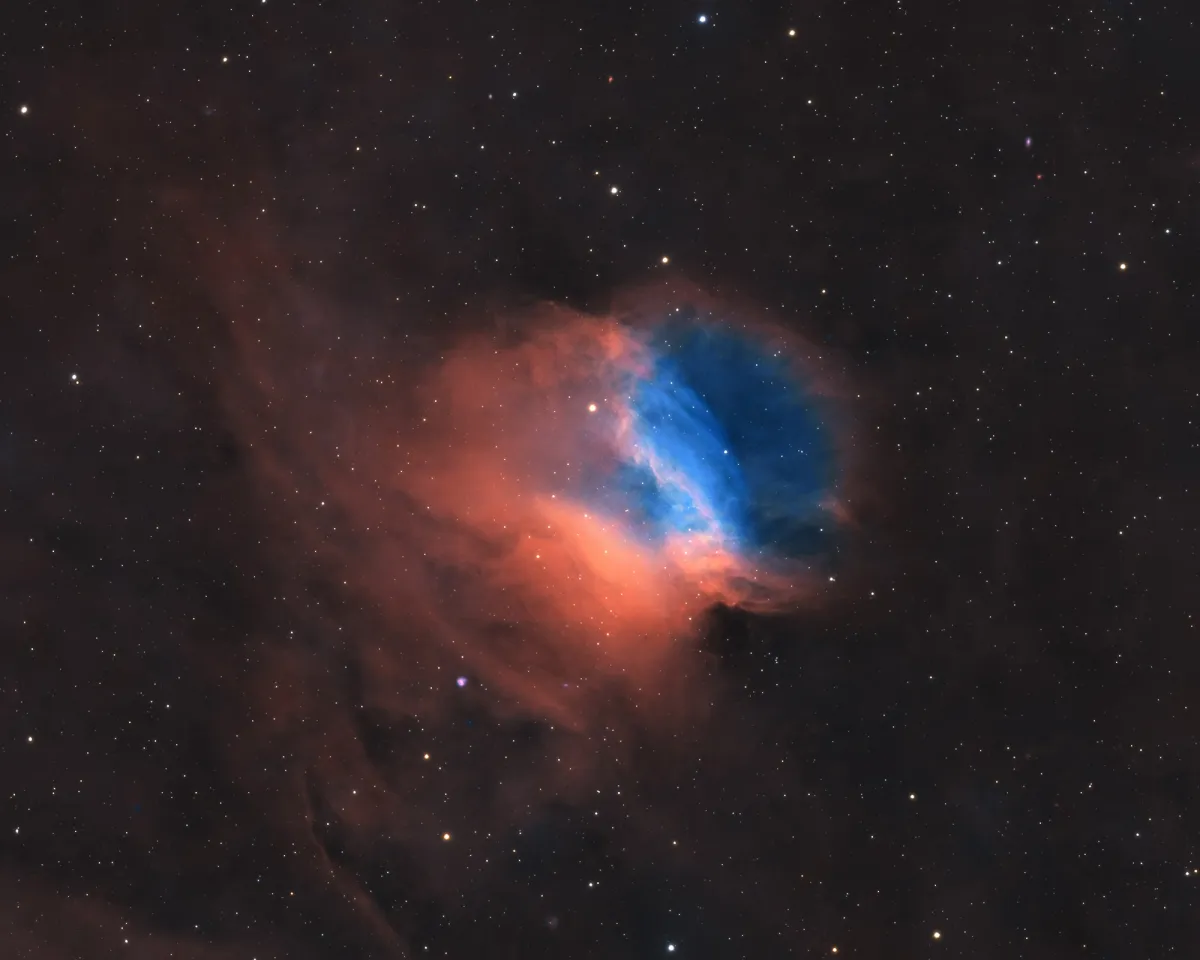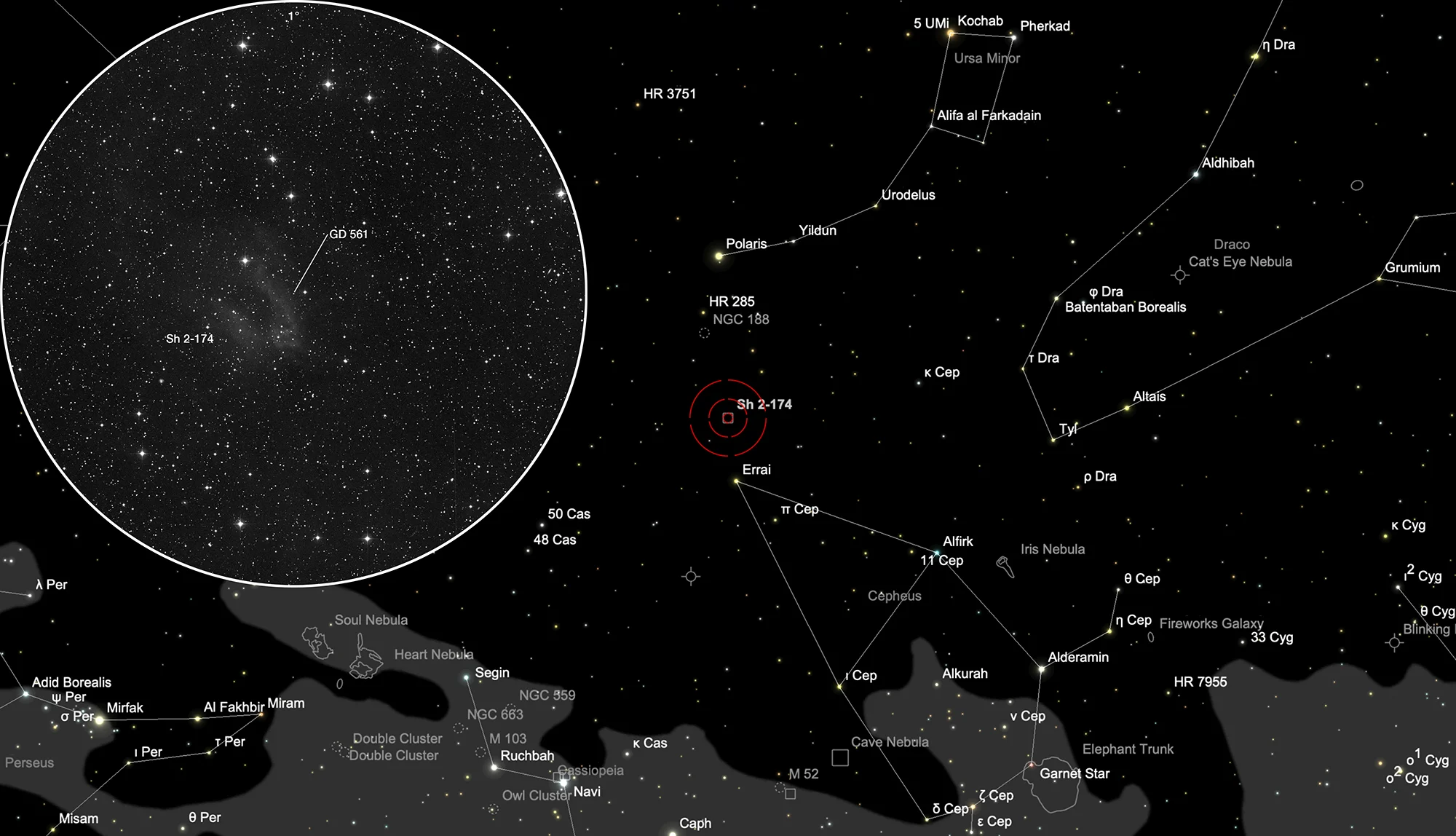Valentine Rose Nebula (Sh 2-174)

History
In 1959 the American astronomer Stewart Sharpless published a «Catalogue of HII Regions» discovered on the photo plates taken with the 48-inch Schmidt telescope for the «Palomar Observatory Sky Survey». He listed there Sh 2-174 as a faint irregular nebula with 10 arcminutes in maximum diameter. [310]
In Beverly Lynds «Catalogue of Bright Nebulae», which was published in 1965, this nebula is listed as LBN 120.29+18.39, also referred to as LBN 598 as it was the 598th nebula on her list. [270]
In 1970 the white dwarf star GD 561 was discovered by Giclas et al. 1993 a spectrogram of GD 561 was created by Napiwotzki and Schönberner and compared to the central stars of the planetary nebula Sh 2-216 and NGC 7293, which showed striking similairty. In the background of their exposure the forbidden O-III lines, typical for planetary nebulae, were clearly visible, hence the classification as H-II region was corrected. [721]
Physical Properties
Sh 2-174 is located at the centre of a neutral hydrogen (H-I) cloud of ~1.2° x ~0.4° size, oriented approximately northeast to southwest. A space-velocity analysis showed, that the central star GD 561 and Sh 2-174 entered the H-I cloud around 27'000 years ago. The central star shows a significant westward offset from the centre of the nebulosity. [722]
Finder Chart
The planetary nebula Sh 2-174 is located in the constellation Cepheus. On 19 September it is in opposition to the Sun and culminates at local midnight.
